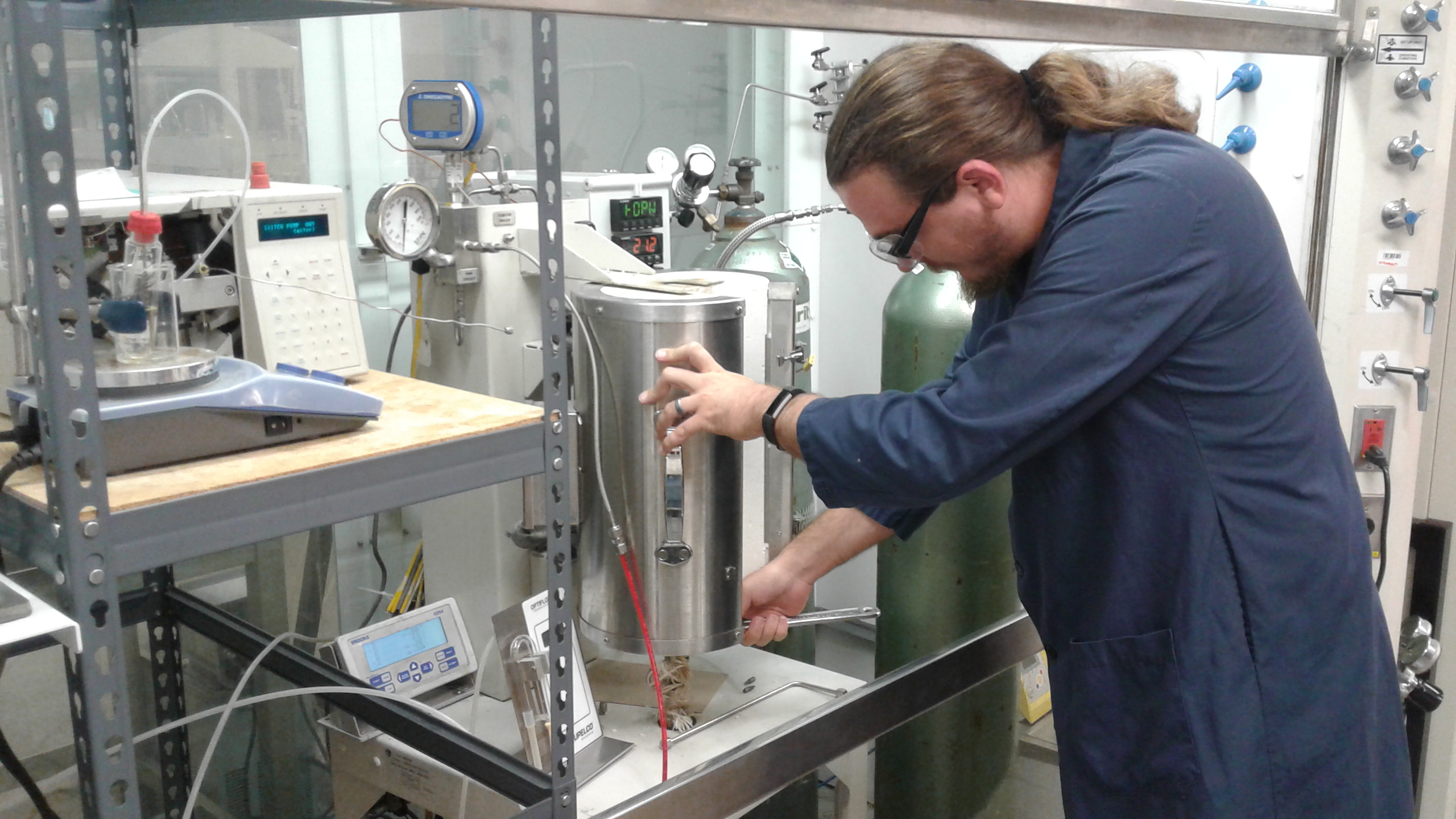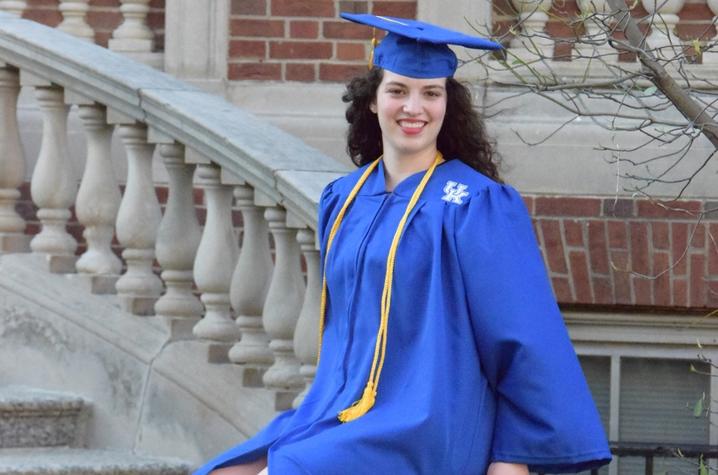UK, MIT Researchers Study Large-scale Energy Storage Battery
By Gail Hairston
A team of scientists at the University of Kentucky and at the Massachusetts Institute of Technology have been awarded a $200,000 National Science Foundation grant to develop a prototype of a battery utilizing chemical components prepared at UK.
UK CAER’s Biofuels Group Receives $2M to Support Novel Emissions Research
By Dave Melanson

Robby Pace, a chemistry graduate student, working at UK CAER.
The University of Kentucky Center for Applied Energy Research’s (CAER) Biofuels and Environmental Catalysis Group has received a $2 million U.S. Department of Energy (DOE) grant to develop new emissions technology for low-temperature gasoline.
DIGITAL HUMANITIES PROJECTS BY MEDIEVALIST ABIGAIL FIREY REACH SCHOLARS ACROSS THE GLOBE
Digital Humanities Projects by Medievalist Abigail Firey Reach Scholars Across the Globe
By Vice President for Research Lisa Cassis
Abigail Firey didn’t set out to blaze trails in digital humanities. But that’s exactly what has happened in her quest to get a grasp on the enormous corpus of unpublished manuscripts that are part of her work in medieval canon law.
Recent Math Grad Awarded 2017 Phi Kappa Phi National Fellowship
By Amanda Lee

Fiona Foster. Photo by William Bingham.
UK Chemistry Researchers Awarded National Science Foundation Grant to Build a Battery Prototype
A team of scientists at the University of Kentucky and at the Massachusetts Institute of Technology have been awarded a National Science Foundation grant to develop a prototype of a battery utilizing chemical components prepared at UK. Professors Susan Odom and John Anthony (UK Chemistry) synthesized new organic compounds as donors and acceptors for a type of battery called a redox flow battery (RFB), currently of great interest for large-scale energy storage.
In Search of Novel Inhibitors of Metallo-β-lactamases
Metallo-β-lactamases (MBLs) are Zn(II)-containing enzymes produced by bacteria that inactivate all b-lactam containing antibiotics, including the carbapenems, which are antibiotics of last resort. While the MBLs have been studied for over 50 years, there are no clinical inhibitors for these enzymes. Therefore, there are few antibiotics available to treat bacterial infections caused by bacteria that produce a MBL. To address this problem, a multi-institution team of synthetic organic chemists (UC San Diego), medicinal chemists (UT Austin), microbiologists and MD’s (Case Western and the Cleveland VA), and structural biologists/biochemists (Miami University) teamed together to identify and develop new potential leads. In the seminar, recent results on a new inhibitor scaffold will be presented, along with biophysical studies on several other recently reported compounds in the literature.
Accurate Calculations in Heavy Atom Chemistry
Abstract:
Chemistry has always been an experimental science, but its guiding principles have come from the realm of physics since the discovery of the nucleus, electrons, and the quantum mechanics that rules them. The field of quantum chemistry has matured to the point where computations can assist in understanding results form the laboratory, or even in suggesting future experimental work. To obtain results of sufficient accuracy, the theoretical chemist must use a large basis set to expand the orbitals and a sufficiently sophisticated many-electron wavefunction. However, when a heavy element is involved, a third complication arises, namely relativity. This seminar will present a computational complement to results obtained in the Yang Laboratory at the University of Kentucky for a Cerium containing molecule. The talk is intended to teach students the connection between the Schrodinger equation and the relativistic Dirac equation. The correct physics of the latter can be approximated in a normal quantum chemistry program solving the former equation by modification of one electron integrals. The presentation of relativistic quantum mechanics will be qualitative - no prior understanding of Einstein is necessary!
